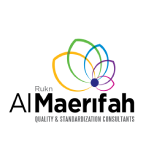What is Food Safety Audit
A food safety audit is a comprehensive assessment of a food establishment’s hygiene practices, food handling procedures, and adherence to health and safety regulations. Conducted by qualified auditors, these evaluations ensure that businesses comply with local and international food safety standards.
Objectives of a Food Safety Audit
The primary goal of a food safety audit is to identify potential risks in food preparation, storage, and service to safeguard consumer health. These audits assess critical areas such as personal hygiene, food handling, sanitation protocols, and record-keeping systems.
Benefits of Food Safety Audits
Food safety audits offer numerous advantages that contribute to business success and customer well-being. Key benefits include:
1. Enhanced Compliance
Compliance with food safety regulations is crucial for avoiding fines, closures, and legal issues. Regular audits ensure that your business meets industry standards and remains updated with evolving guidelines.
2. Consumer Confidence
Demonstrating your commitment to hygiene and quality through regular audits helps build consumer trust. Positive perceptions of safety contribute to customer loyalty.
3. Risk Mitigation
Regular audits help identify potential hazards such as cross-contamination risks, improper storage practices, or unclean equipment.
4. Operational Efficiency
Food safety audits often uncover inefficiencies in workflow, staff procedures, and resource utilization.
5. Improved Staff Training
By highlighting areas for improvement, businesses can implement targeted training programs that enhance staff awareness.
Key Components of a Food Safety Audit
To ensure thorough evaluation, food safety audits encompass various critical aspects of food management practices. These components include:
1. Personal Hygiene Practices
Staff hygiene plays a vital role in preventing contamination. Auditors evaluate employee handwashing practices, the use of protective gear such as gloves and hairnets, and adherence to personal hygiene standards.
2. Food Handling and Storage
Proper handling techniques and storage conditions are crucial for preventing spoilage and contamination.
3. Facility Cleanliness
Auditors evaluate kitchens, dining spaces, storage rooms, and restrooms to ensure sanitation standards are upheld.
4. Temperature Control & Storage Practices
Auditors check refrigeration units, freezers, and hot holding stations to confirm they operate at safe temperatures.
5. Documentation and Record Keeping
Auditors review records such as temperature logs, cleaning schedules, staff training reports, and supplier information.
6. Cross-Contamination Prevention
Auditors inspect kitchen workflows, utensil management, and preparation surfaces to prevent cross-contact between raw and cooked foods.
7. Labelling and Allergen Management
Auditors assess labeling practices, ingredient tracking systems, and allergen control measures to reduce risks.
Implementing a Food Safety Audit Program
Establishing a comprehensive food safety audit program involves strategic planning and proactive execution. Follow these steps to ensure your audit program is effective:
Step 1: Schedule an Initial Consultation
Begin by consulting with a qualified food safety auditor to understand the audit process and the specific requirements for your establishment.
Step 2: Develop an Action Plan
Create a detailed action plan that outlines corrective measures, staff training requirements, and timelines for implementation.
Step 3: Sign an Agreement and Start the Audit
Formalize your audit program by signing a contract with your auditor. Schedule the first comprehensive audit and follow up on any recommendations provided.
Step 4: Implement Corrective Actions
Address identified risks and implement the recommended improvements.
Step 5: Conduct Follow-Up Audits
Regular follow-up audits ensure that improvements are sustained and identify new areas for enhancement.
Step 6: Evaluate Results and Adjust Practices
Assess the effectiveness of implemented measures by reviewing audit reports and consumer feedback.
Common Challenges in Food Safety Audits
While food safety audits provide substantial benefits, businesses may encounter certain challenges:
1. Inconsistent Staff Practices
Staff may forget or bypass safety protocols. Regular training and reinforcement are essential to ensure compliance.
2. Resource Limitations
Smaller establishments may struggle to allocate sufficient resources for comprehensive audits.
3. Resistance to Change
Employees may resist new procedures. Clear communication, education, and demonstrating the benefits of food safety audits can improve cooperation.
How to Choose the Right Food Safety Auditor
Selecting the right food safety auditor is a crucial step in maintaining high food safety standards and ensuring compliance with regulations. Consider these key factors:
1. Experience and Credentials
Look for auditors with recognized certifications such as HACCP, ISO 22000, or GFSI-recognized standards.
2. Industry Knowledge
An auditor with deep knowledge of your industry will be able to assess risks accurately and provide relevant recommendations.
3. Clear and Actionable Reporting
The audit findings should highlight strengths, areas for improvement, and practical recommendations for corrective actions.
Why Choose Almaerifah for Food Safety Audits?
At Almaerifah, we are committed to delivering top-tier food safety auditing services tailored to your business needs. Our certified auditors bring extensive experience, deep industry knowledge, and a commitment to clear, actionable reporting. Whether you need a compliance audit, risk assessment, or process improvement guidance, Almaerifah is your trusted partner in ensuring the highest food safety standards.


